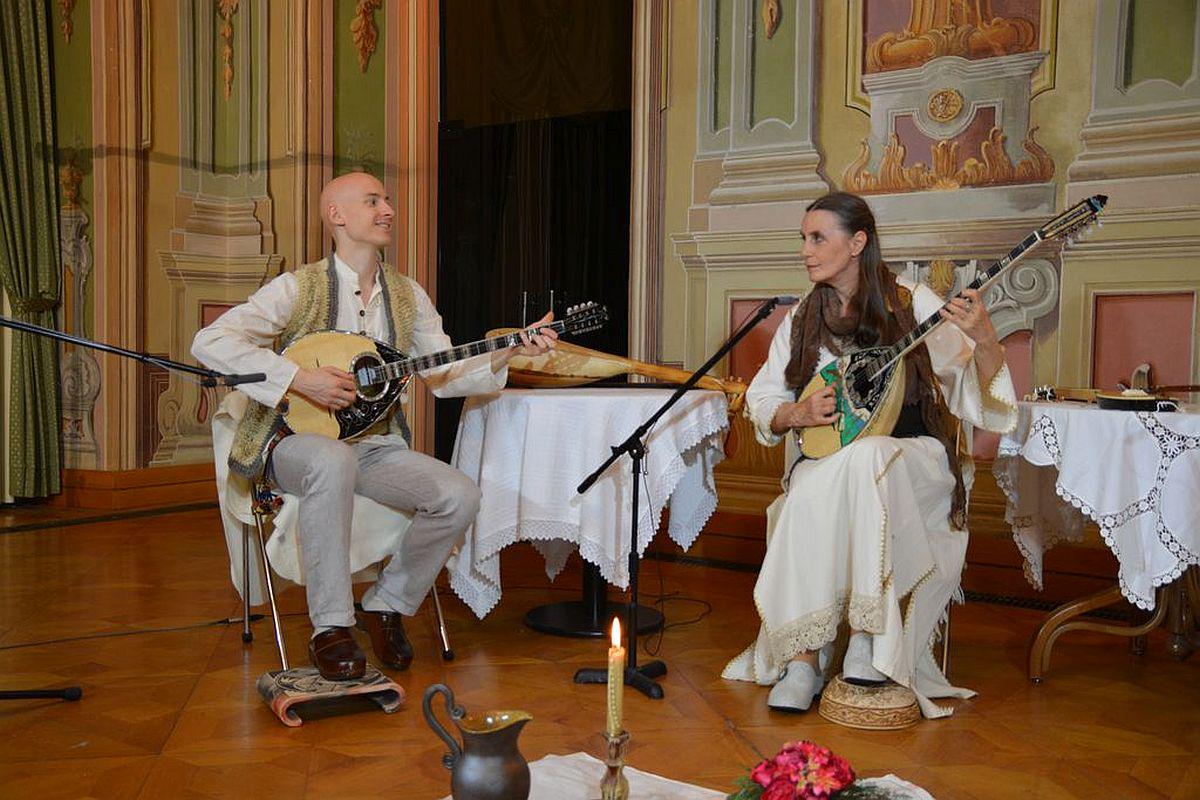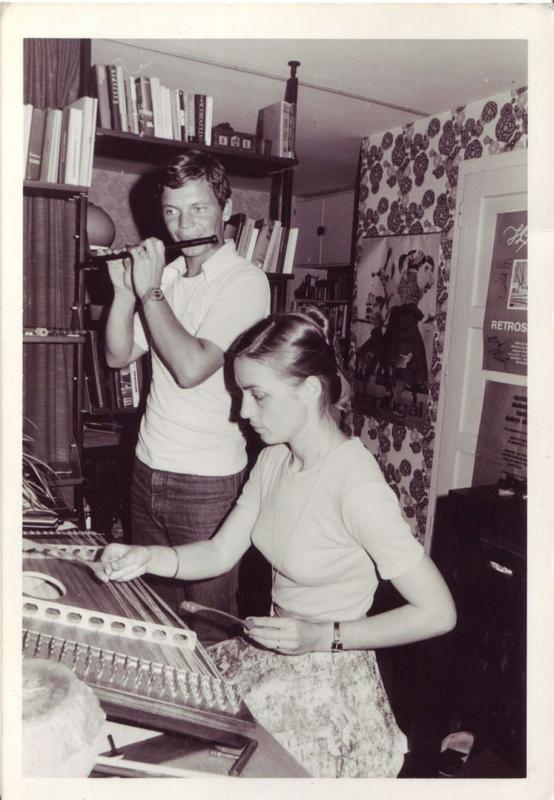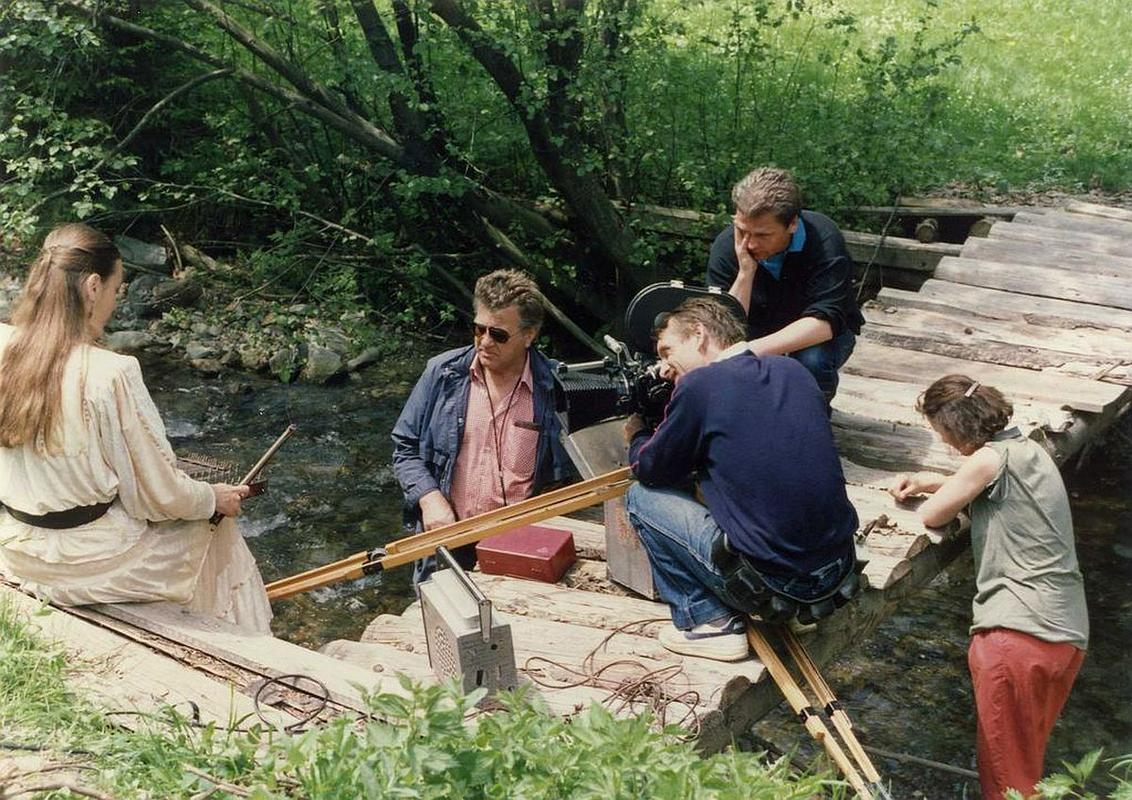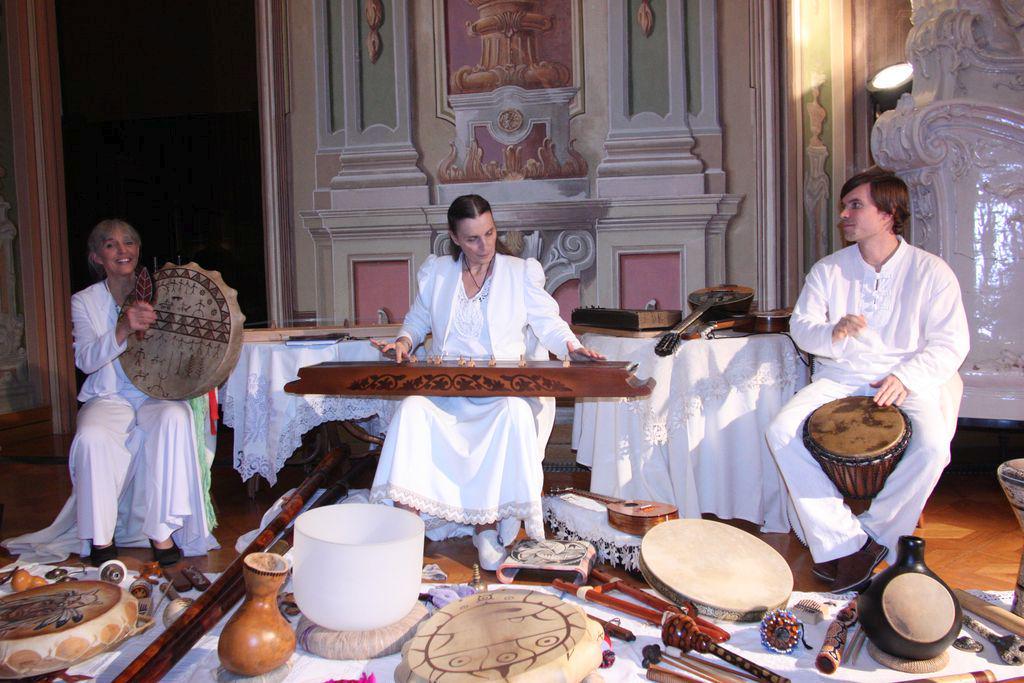
Slovenia’s folk heritage is very diverse…. I often say we are like a football, created of multiple patches, with each patch having a different colour.

When we played in front of the Slovene community in Belgium, the whole audience sang with us. Those were songs which nobody in Slovenia knew anymore. I'm talking about ballads, old harvest songs, old songs linked to different rituals, which preserved, still live abroad.

Today, people insist on richness and expansiveness, while our ancestors knew how to delight in simplicity. They searched for the basic sound which strengthened their body. And that sound was always found in one single string....

The Slavic soul is very soft. When we stage concerts abroad, foreign audiences say that the Slavic soul and music are melancholic.

"
At the age of 15 she began researching Slovene folk instruments. When she was 22 she began reviving Slovene folk instruments and songs, long forgotten by the nation. Mira Omerzel - Mirit, whose PhD is in ethnomusicological sciences, is a musician, writer, collector and researcher of pre-classical and folk musical instruments. She is a healer, spiritual teacher, intercultural runner and keeper of ancient Slovene and Slavic wisdom. She is also the leader of the Vedun Ensemble, an ensemble dedicated to the old and overlooked musical heritage of the world. We spoke to Mirit ahead of the ensemble’s concert on 27th of November in Ljubljana, which will promote the release of their new CD and DVD. We talked about Slovenia’s musical heritage, the times we live in, the Slav soul and the power of sound.
You have been reviving Slovenia’s heritage on concert stages for more than 36 years. When you started were there any others doing similar things?
Certainly not. This was pioneer work. We were alone for 10 years, only then did a few imitators appear. However, they were more linked to the regions they came from and their playing was wrapped in fashionable musical patterns like rock, pop, turbo-folk. By doing so, they have considerably corrupted Slovenia’s folk music, which has survived for more than 2000 years. And if something comes down to us through countless generations, through the centuries, it deserves to go forward. Spreading this music into the popular scene does our heritage a real disservice.
Is this area we live in a rich cultural treasure chest?
This area is a very rich treasure chest. We live at a crossroads of cultures right at the heart of Europe. In the South, we are linked with Oriental, Balkan music, with Eastern Slavs in the East, in the North we are connected to Central European Alpine elements, while the West brings us Mediterranean features. We were one of the first nations in Europe to have a collection of folk songs which was published in 1895 by Karl Štrekelj. Next year marks the 130th anniversary of this great collection. Slovenia’s folk heritage is very diverse. In fact, we can’t even speak of a Slovene heritage, but rather of regional identities because each region has its own soul. I often say we are like a football, created of multiple patches, with each patch having a different colour.
What is the Slavic soul like?
The Slavic soul is very soft. When we stage concerts abroad, foreign audiences say that the Slavic soul and music are melancholic. With the exception of Alpine music, which is influenced by Central European dancing songs, we have very rhapsodic, melancholic, sensuous music. But we need to bear in mind that throughout history other cultures were always the more dominant. Slavs have always been somewhat pushed aside. And that is why the essence of our ensemble is to showcase the diversity of the ancient Slavic culture.
Can you tell us more about Slovene and Slavic instruments?
What defines Slovene music is the softness of Slavic cimbaloms, and the softness of zithers, like for example the violin zither and the drone zither, which are hardly known at all today. Furthermore, we have panpipes, cimbaloms, žvegle (the wooden predecessors of modern flutes), Istrian šurle (double flutes), Jew's harps, ocarinas … The first Slavic instruments were very simple, like for example the single-stringed gusle, which is known all over the Balkans. Then we have the Eastern Slavic igil with only two strings. These ancient instruments were used to accompany songs. Through the centuries musical instruments with ever more strings have developed right out of these old instruments. Today, people insist on richness and expansiveness, while our ancestors knew how to delight in simplicity. They searched for the basic sound which strengthened their body. And that sound was always found in one single string which was attuned to the tone of the Earth’s rotation.
What was the role of music in the past and what is it today?
Yes, this is interesting. Today the language of sound has lost its power, its ritual content and meaningfulness. People use music for fun, while in the past it was used for attuning humans with the Earth and Universe. The language of words is limited. The language of music - it's a language too - is much broader and can reach into all levels of our existence and reality. Our ancestors carefully created and used sound formulae and codes in order to find balance. Approximately 2000 years ago this knowledge began to disappear. That’s a pity. Nowadays people use the language of music very recklessly and then they ask themselves why they feel so down and tired.
The Vedun Ensemble will be performing on 27th of November. Which instruments will you be playing?
We are preparing a promotional concert, entitled "The Euphony of the Vibrating Strings in the Melodies of the World" which will take place on the 27th of November at the Festivalna Dvorana in Ljubljana. The concert will promote the release of our bouzouki CD and a DVD of audio-visual recordings, which was produced to mark the 35th anniversary of our stage performances. The concert will begin and end with pieces from Slavic and Slovene culture. We have cimbaloms, Siberian chartan, ancient Vedic mantras, mantras from Slovenia and the Prekmurje region. The central part will be reserved for the Greek bouzouki. The concert programme will be rich, ranging from Slavic, ancient Slavic, Roma, Greek, Arabic, Tuvan and ancient Russian melodies to aliquot throat singing of which my son Tine is a master. We will end with the Balkan ritual of ojkanje singing and with a kolo circle dance - the essence of Balkan tradition.
Performing music at concerts is also a ritual, is it not?
Each of our concerts is a sound ritual. It begins in total silence, by initiating the sound into the room and among the people. Then the energy increases more and more. It ends with shamanic drums, after which we again withdraw into the silence of the room. Our ensemble nourishes the priestly quality of music. In this way we return to the music its sacredness and its harmonising effects which are unfortunately lost today. That is why our ensemble is unique in Slovenia and the world. Our efforts to revive not only songs, but also priestly musical practices, have not yet been attempted on stage. That is a special gift and task for all the ensemble members.
At home you have an impressive collection of different folk instruments from around the world. Do you know how many instruments you have?
Around 250. We're slowly trying to bring them all back to life. We explore their abilities, dimensions, what could be done with them … You know, many ensembles show up, play for a few years and when the fashion changes they disappear. But we, despite our 36 years of concerts and my 44 years of research, continue to expand our abilities and journey ever more deeply into the essence of sound. I am very happy that the ensemble is getting younger. Mojka Žagar and I are the oldest, already with a few grey hairs, but then we have Tine Omerzel Terlep and Igor Meglič who will continue our work. It is extremely important that a musician doesn't just come and go like a fad. Musicians need to delve into the essence of sound, expanding their abilities and strivings. In this way their music won't fade away. The older they are, the broader their consciousness. They are more aware of the sound's effect, they sense the sound better and can thus give more to the world.
And you're not running out of energy?
We have more and more energy by the day!
Slovenia’s folk heritage is very diverse…. I often say we are like a football, created of multiple patches, with each patch having a different colour.
When we played in front of the Slovene community in Belgium, the whole audience sang with us. Those were songs which nobody in Slovenia knew anymore. I'm talking about ballads, old harvest songs, old songs linked to different rituals, which preserved, still live abroad.
Today, people insist on richness and expansiveness, while our ancestors knew how to delight in simplicity. They searched for the basic sound which strengthened their body. And that sound was always found in one single string....
The Slavic soul is very soft. When we stage concerts abroad, foreign audiences say that the Slavic soul and music are melancholic.

































































